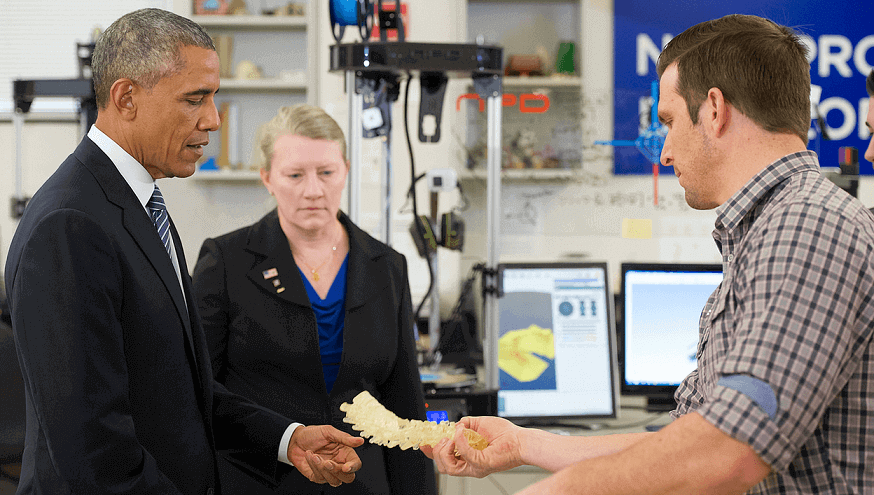3D printing should be added to the curriculum, says Rachel Park. Still, we must overcome a number of barriers for widespread adoption.
If you’re into 3D printing, Rachel Park doesn’t need an introduction. As a journalist, she covered the 3D printing and additive manufacturing sector since 1996. She led 3D Printing Industry as Editor in Chief and also edited Disruptive Magazine for 3D Printshow. Currently, Rachel works as an independent freelance journalist and runs her own copywriting and editing company.
Here’s Rachel Park’s Overview on 3D Printing & Education

Putting 3D printing aside for one moment, an education is among the most precious gifts we can offer future generations — from the basics (reading, writing and arithmetic) through to providing them with a set of skills — practical and sociological — that will enable them to navigate their personal and professional lives as successfully as possible. We can argue the rights and wrongs of the national systems of education to kingdom come, but that is (mostly) a debate for another time and place.
This post is intended to provide an overview of why 3D printing — and the ecosystem around it — should be identified and adopted as an important component of curriculums worldwide. I plan to keep coming back to this issue of education through the course of this year, with the aim of developing a series of posts here on All3DP that emphasize the importance of 3D printing education, and highlighting some of the people and organizations that are on the ground making it happen. The series will be interspersed with posts about other pertinent 3D printing topics of timely relevance; however, looking at the big picture, for me, education remains the most fundamental issue when it comes to 3D printing and its future. And when I say “education” here, I do mean it in the traditional sense of teaching our children and young people, but also within the context of educating existing and potential new users of 3D printing technology now.
Education: A Key Vertical Market within the 3D Printing Industry

Education can now be identified as a key vertical target market within the 3D printing industry, particularly for vendors of desktop machines. At once this has positive and negative implications. The awareness of the importance of education is brilliant and wider adoption of 3D printing technologies by schools and colleges will reap numerous benefits that I will address, but competitive vendors, price wars, locked-in curriculum materials and misleading marketing materials can — and should — generate legitimate wariness and research prior to purchase.
With the (now generally accepted) absence of “the everyday consumer” for desktop 3D printers, the two key markets for this size/capability of machines are the growing maker movement and, as stated, educational institutions.
There are many positive benefits for focusing on education across the 3D printing ecosystem, in terms of 3D design, content, the context of making, getting hands-on with the machines and the materials used. 3D printers in schools also present opportunities to develop invaluable links to other subjects, including but not limited to maths, science, IT, art, history and geography.
A Life-long Love for Designing & Making

I believe that incorporating 3D printing into a curriculum will increase the numbers of pupils with a life-long love of designing & making and/or a desire to pursue a career in manufacturing directly. Despite a nearly 30-year history it behooves us to remember that additive technologies are today embryonic in terms of their future history. Of course, 3D printing will not appeal to every student everywhere, but presenting the opportunity and developing practical skills of this nature can only improve the odds of producing more designers, engineers, and manufacturers that will develop applications that remain impossible today. Even putting the potential to one side, and focusing solely on the present and the clearly identified skills gap within manufacturing industries in western nations, anything and everything that can be done to close this gap should be emphatically embraced. Of course this means contextualizing 3D printing correctly — within its own ecosystem and among traditional, often complementary, technologies.
The unforeseen, long-term benefits should not be overlooked either in this regard. The 3D printing ecosystem is now impacting disciplines that do not necessarily scream technology know-how. Today museum archiving and marine conservation are just a couple of examples, but plant the seed of what’s possible now during the education of today’s high schoolers and however hard it may be to quantify the future benefits, they will come. In a corporate world ruled by numbers, this might not seem an enticing reason, but for educators looking to inspire it should be a very good reason indeed.
A Number of Barriers to Widespread Adoption

However, it would be grossly misleading to only wax lyrical about the benefits of 3D printing in education. There remain a number of barriers to widespread adoption of 3D printing in schools and colleges that can limit the value of having machines in classrooms. And this is where the debate can often get political — which takes us back to those national education systems that often have an emphasis on statistics rather than the young PEOPLE any education system should serve.
With budgetary constraints a primary issue for many schools, the capital expenditure is the first barrier to get over; and even when it can be overcome, the ongoing expense of the consumable materials can see the machine relegated to dusty corners or cupboards in classrooms when those costs are not budgeted for correctly, or overlooked at the point of sale.
Curriculum materials that holistically support the use of any 3D printer are fundamental to maximizing the value of having the machine in schools. There is a great deal of work being done here, although much of it is by machine vendors that tailor materials to specific machines/software, rather than an open approach to a technology set.
Another issue is with teaching staff and ensuring that they have the understanding and the correct curriculum materials to maximize the use of 3D printers in the classroom — not just in design technology but across all areas of the curriculum as outlined above.
It is very easy to get too idealistic, or, equally too pessimistic about education. Realism is the key — even if that is one classroom at a time!
Looking ahead, I hope to talk to some of the companies that are working in this area, as well as some of the schools/colleges that are buying in. The perspectives of all should help to bring some realistic clarity to what is working, what isn’t and where we can improve.
License: The text of "3D Printing & Education: First An Overview" by All3DP is licensed under a Creative Commons Attribution 4.0 International License.